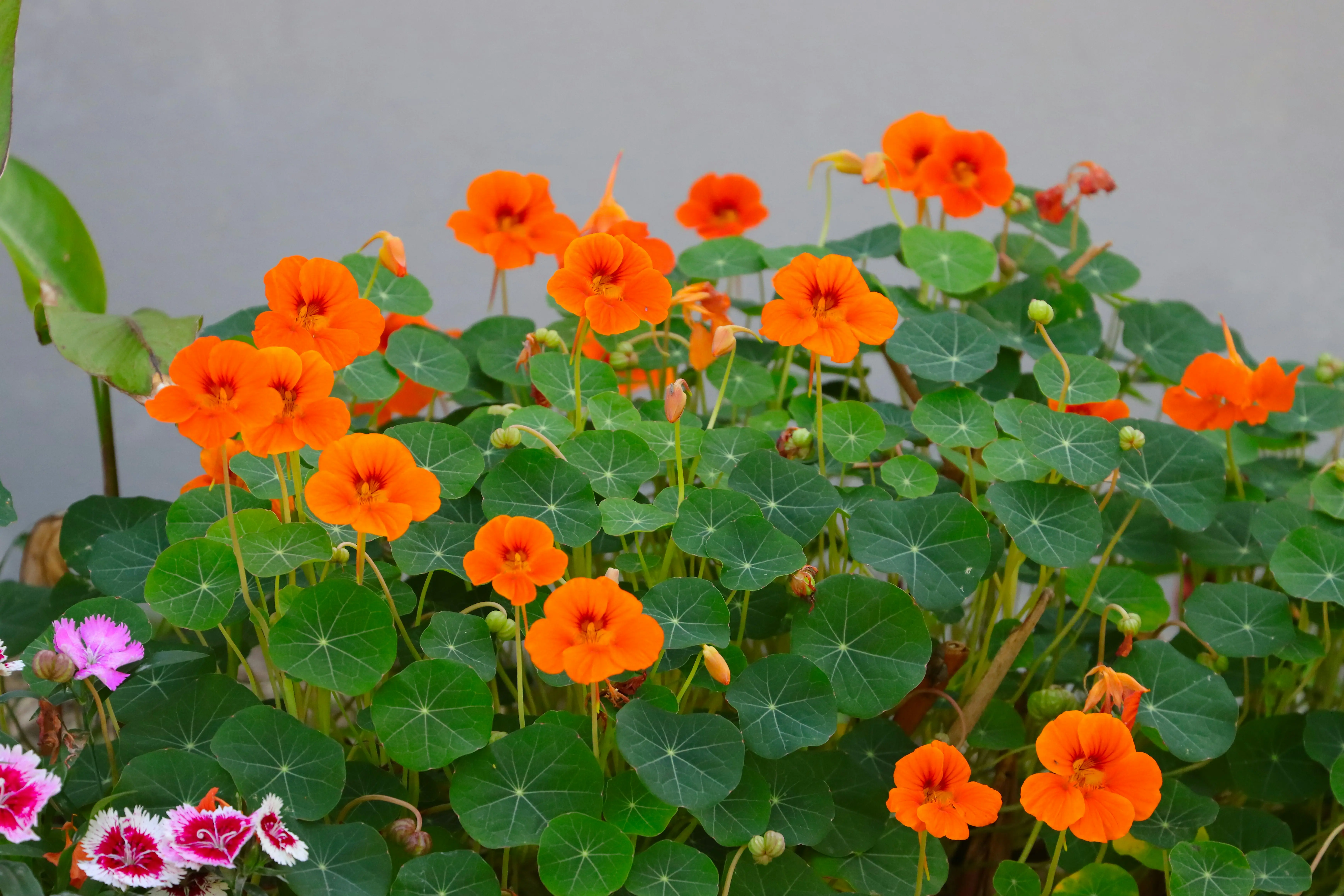Nasturtium
A complete guide to growing Nasturtium in the UK.
Introduction
Nasturtium (Tropaeolum majus) is a vibrant, easy-to-grow annual prized for its bright, edible flowers and trailing or climbing habit. Known for its peppery-flavoured leaves, it is popular in salads, garnishes, and as a companion plant in vegetable gardens. In the UK, nasturtiums are a favourite for attracting pollinators such as bees and butterflies while also helping to deter pests like aphids.
Types and Timing
Common varieties include trailing types, ideal for hanging baskets or ground cover, and upright types suited for borders. Flowers come in shades of yellow, orange, and red. Seeds can be sown directly outdoors from April to June, once the risk of frost has passed. For an earlier start, seeds can be sown under cover in March. Succession sowing every few weeks ensures a long flowering season from late spring to autumn.
Site and Soil Requirements
Nasturtiums thrive in full sun but tolerate partial shade. They prefer well-drained, moderately fertile soil and actually perform best in poorer soils, which encourage more blooms rather than lush foliage. Rich soil can lead to excessive leaf growth at the expense of flowers.
Propagation & Planting
Seeds can be sown directly 1-2cm deep and spaced 20-30cm apart for trailing types or 30-40cm for upright varieties. If starting indoors, plant in small pots and transplant carefully after hardening off.
Growing & Maintenance
Water young plants regularly, then reduce once established. Nasturtiums are low-maintenance and rarely need feeding. Deadhead spent flowers to prolong bloom.
Harvest and Uses
Leaves, flowers, and seeds are all edible. Flowers add colour to salads and garnishes, while seeds can be pickled.
Troubleshooting & Pests
Nasturtiums can attract aphids but act as a trap crop to protect other plants. Slugs may damage seedlings. They are otherwise hardy and trouble-free.
Tips
Plant near tomatoes or cucumbers to deter pests, and enjoy their continuous blooms throughout summer and early autumn.
© What to plant 2025. All rights reserved
